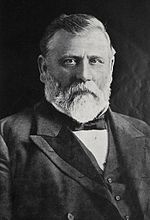| |||||||||||||||||||||||||||||||||||||
All 74 seats in the New Zealand House of Representatives 38 seats were needed for a majority | |||||||||||||||||||||||||||||||||||||
|---|---|---|---|---|---|---|---|---|---|---|---|---|---|---|---|---|---|---|---|---|---|---|---|---|---|---|---|---|---|---|---|---|---|---|---|---|---|
| Turnout | 75.3% | ||||||||||||||||||||||||||||||||||||
| |||||||||||||||||||||||||||||||||||||
 Results of the election. | |||||||||||||||||||||||||||||||||||||
| |||||||||||||||||||||||||||||||||||||
Preview warning: Page using Template:Infobox election with unknown parameter "next_mps"
The 1893 New Zealand general election was held on 28 November and 20 December in the European and Māori electorates, respectively, to elect 74 MPs to the 12th session of the New Zealand Parliament. The election was won by the Liberal Party, and Richard Seddon became prime minister.
1893 was the year universal suffrage was granted to women over 21 (including Māori), plural registration was abolished, plural voting for Māori property-owners was abolished, and only those whose descent was exactly half Māori were allowed to choose whether to vote in European or Māori electorates. Women's suffrage was the most consequential change.

